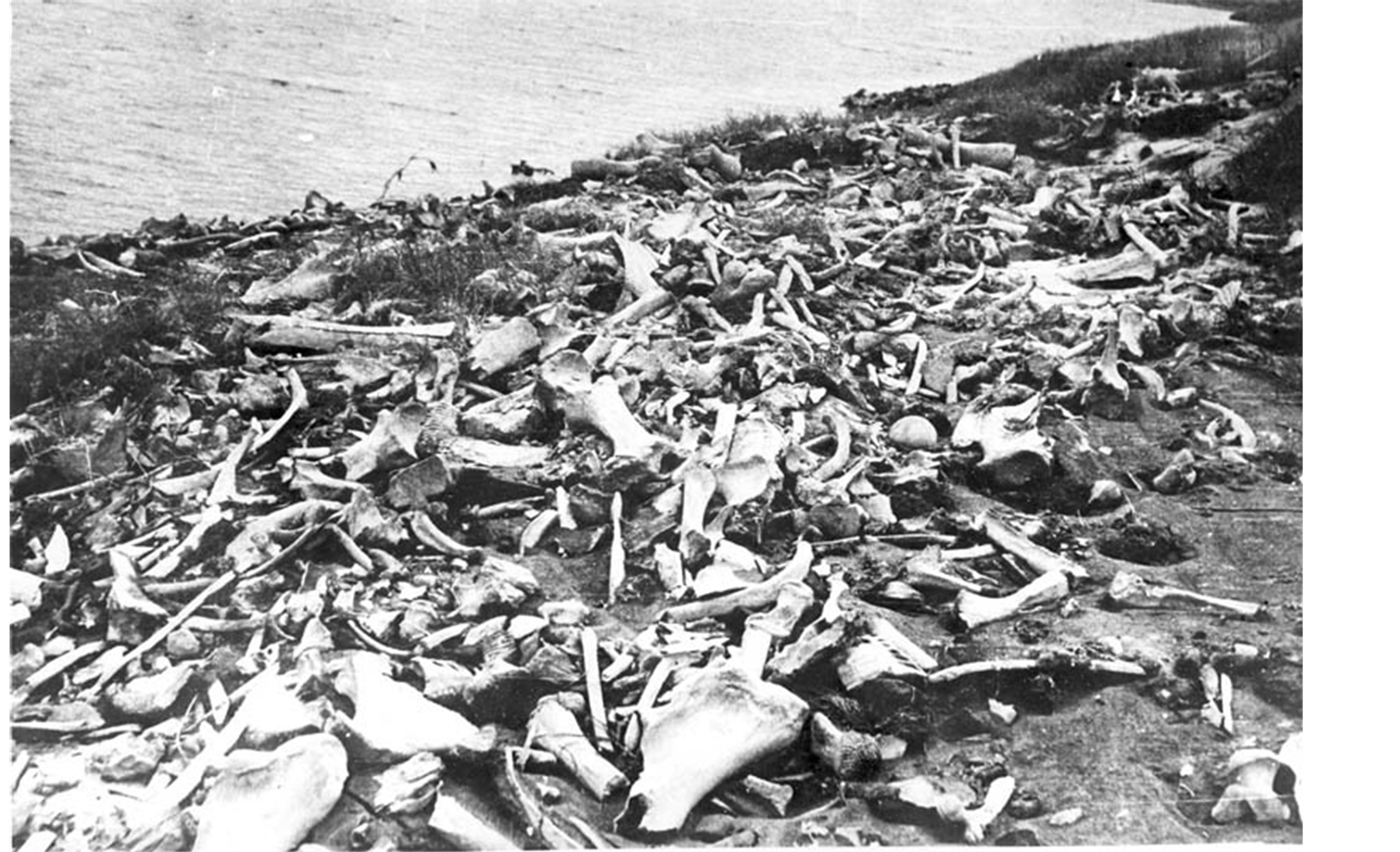
Winding northward through the searingly cold Arctic plains, Siberia's lonely Berelekh River is the site of a grim but fascinating archeological find. Here, archaeologist Yuri Mochanov discovered the first "mammoth cemetary", littered with the ancient remains of nearly two hundred woolly mammoths. Among the bones, he also unearthed several stone artifacts, including prehistoric hand axes, blades, spearheads, drilled stone pendants and other artifacts carved out of bone and tusk.
Long believed the result of a natural disaster, this ancient graveyard is now believed to have been the handiwork of our homonid ancestors — with a little help from man's best friend.
According to Pennsylvania State anthropologist Pat Shipman, 30 similar mammoth graveyards have been found across central Europe and North Asia, all appearing from around 44,000 years ago - the era of homo sapiens' first arrival in the region. It appears, she says, that these were ambush sites, possibly along major migration routes.
Huts erected from mammoth tusks and bones, along with burn and cut marks on the remains are further evidence that these are the refuse of human hunters.
Shipman believes these mammoth graveyards are the first major evidence of a cooperative relationship developing between humans and dogs: other skulls found among these sites are from "Laika", transitional canine species from a time when wolves were evolving into domesticated dogs. Many of the skulls, adds Dr. Shipman, show fractures which had healed, strong indications the creatures had been nursed back to health by human caretakers.
She speculates that these early canines may have cornered mammoths at ambush sites, holding them at bay until humans could move in to make the fatal blows, and afterwards guarding the kills against hungry scavengers. The scent of a huge mammoth's exposed flesh would have attracted predators from miles away. In return for such assistance, humans may well have provided these early animals with food, shelter and care, leading to true domestication.
Shipman is not alone in her beliefs. Dr. Petr N. Kolosov of the Russian Academy of Sciences says the colonization of the Arctic was one of mankind's greatest achievements within the last 35,000 years, and domesticated wolves - the ancestors of all modern dogs - played a major part. Still, the scenario has its skeptics; Dr. Nicholas Conard of the University of Tübingen in Germany says more evidence is necessary before a definitive conclusion can be made.
The foregoing is an excerpt from the new revised edition of The Path Book I: Origins, due for publication this September
Sources: How do you kill 86 mammoths? Taphonomic investigations of mammoth megasites, Pat Shipman, May 29, 2014, Quaternary International; DOI: 10.1016/j.quaint.2014.04.048;
Did Dogs Help Drive Mammoths to Their Graves? David Grimm May 29, 2014 Science Magazine;
Primitive Mammoth Hunters and the Earliest Breed of Dog, Petr N. Kolosov, Natural Resources, Vol.5 No.3(2014), Article ID:44327,7 pages DOI:10.4236/nr.2014.53011
No comments:
Post a Comment